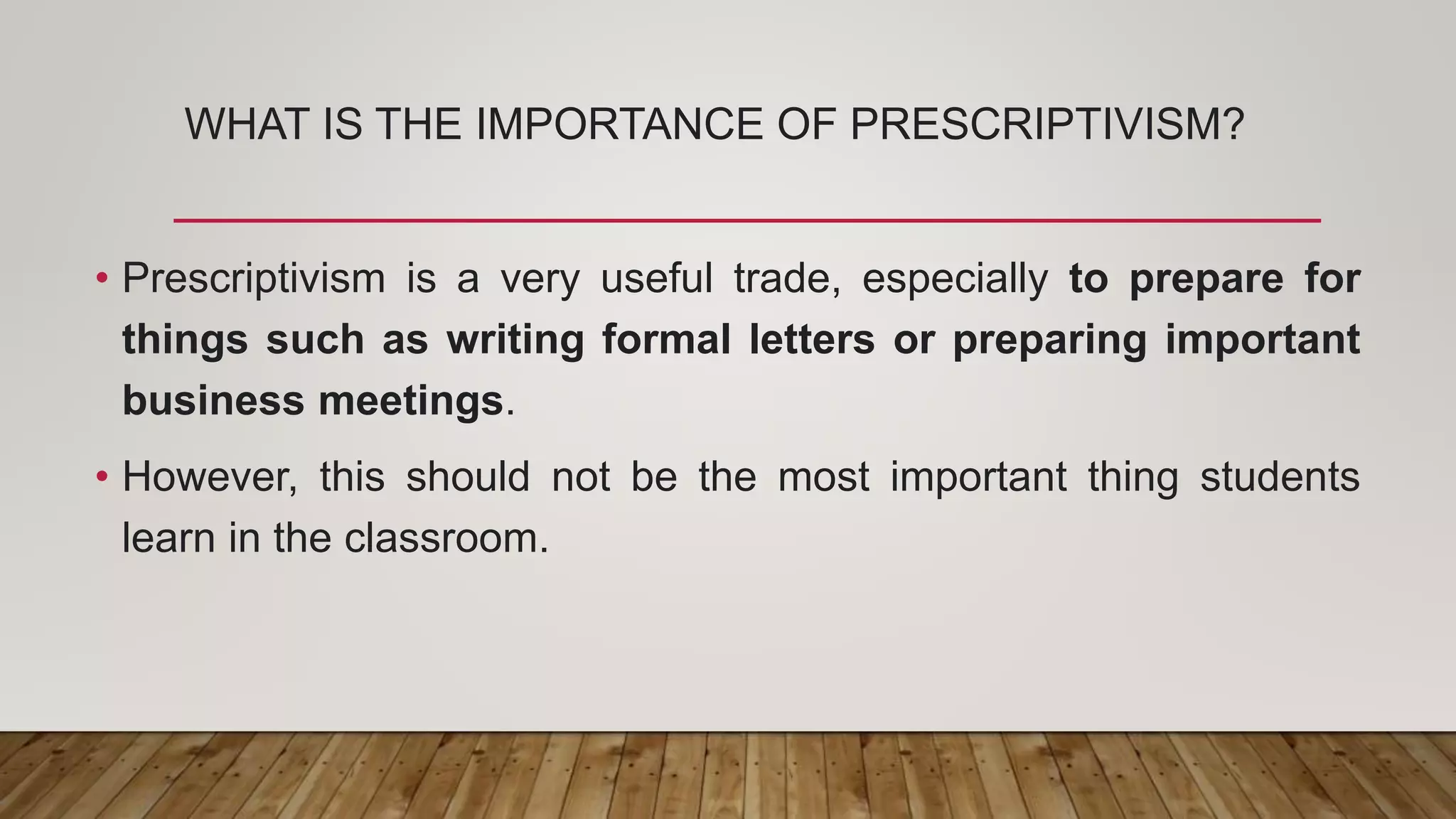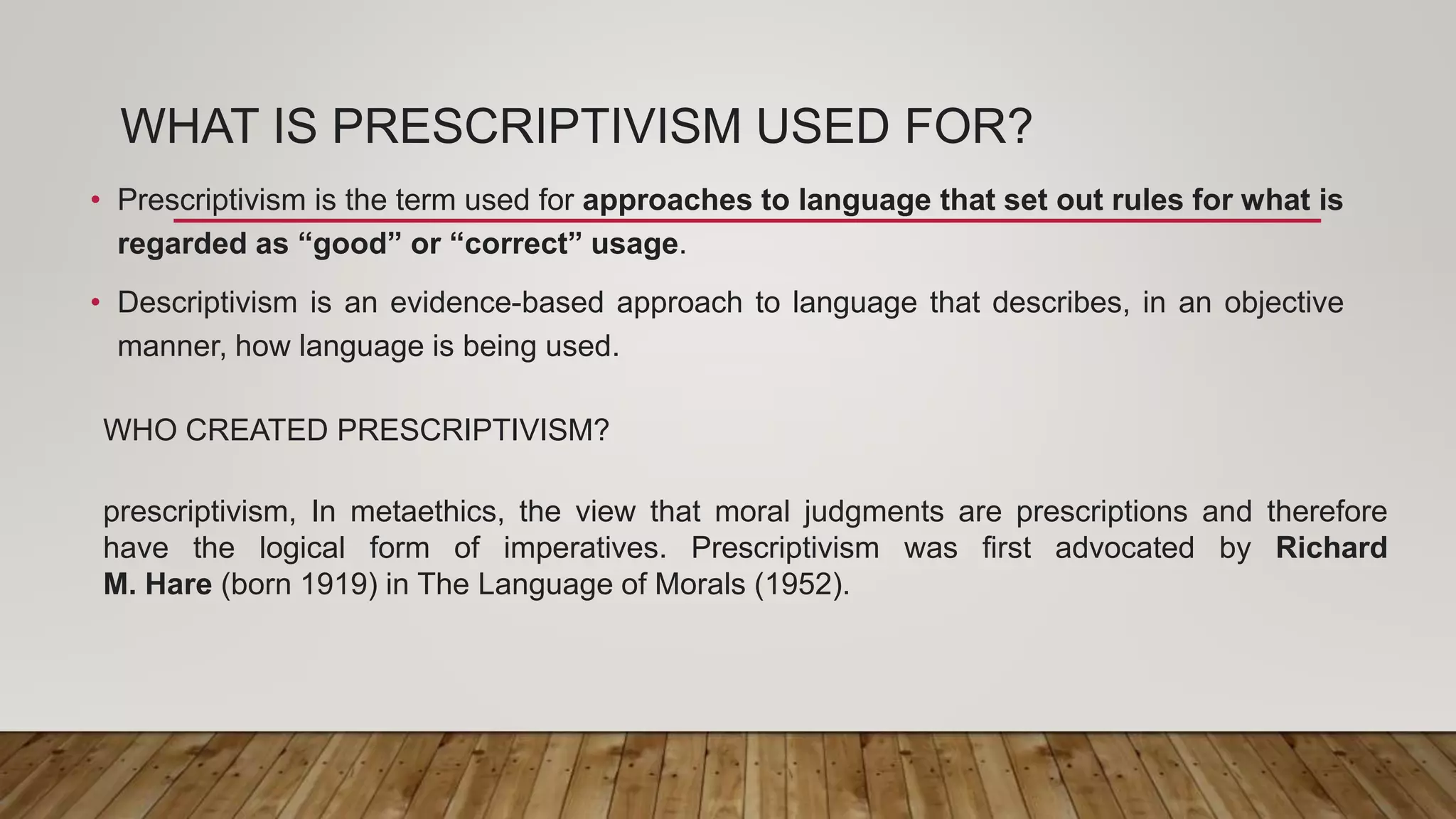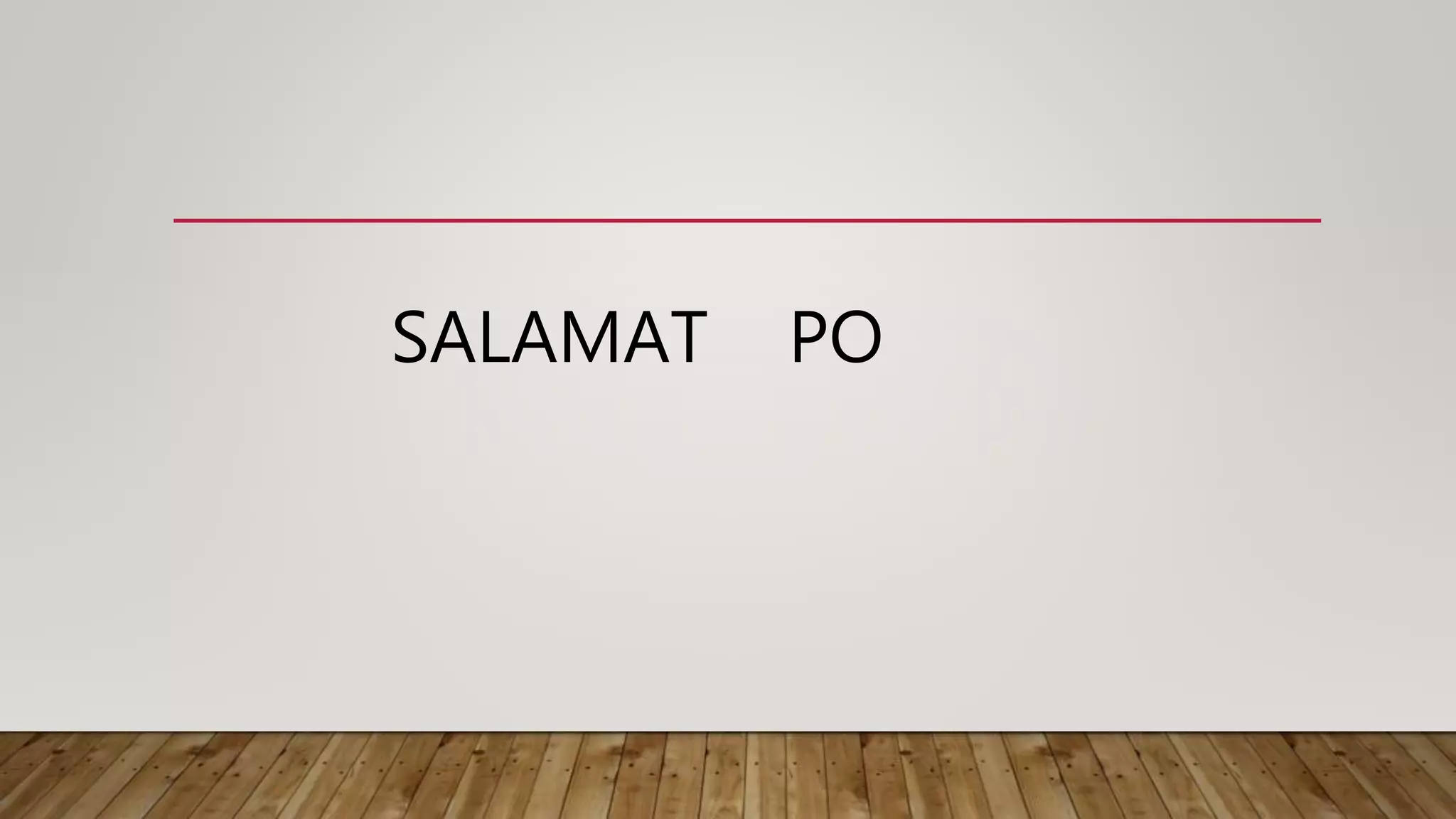This document discusses several key concepts in linguistics including:
1. The autonomy of syntax - the theory that syntax operates independently of meaning and pragmatics.
2. Compositionality - the principle that the meaning of a phrase or sentence can be derived from the meanings of its parts and their structure.
3. Conservative vs innovative forms - conservative forms change little over time while innovative forms undergo more recent changes.
4. Prescriptivism - the belief that there are correct and incorrect ways to use language based on explicit rules imposed on speakers.
5. Methods of linguistic research include collecting primary and secondary data using tools like interviews, observations, and questionnaires for qualitative and quantitative analysis.
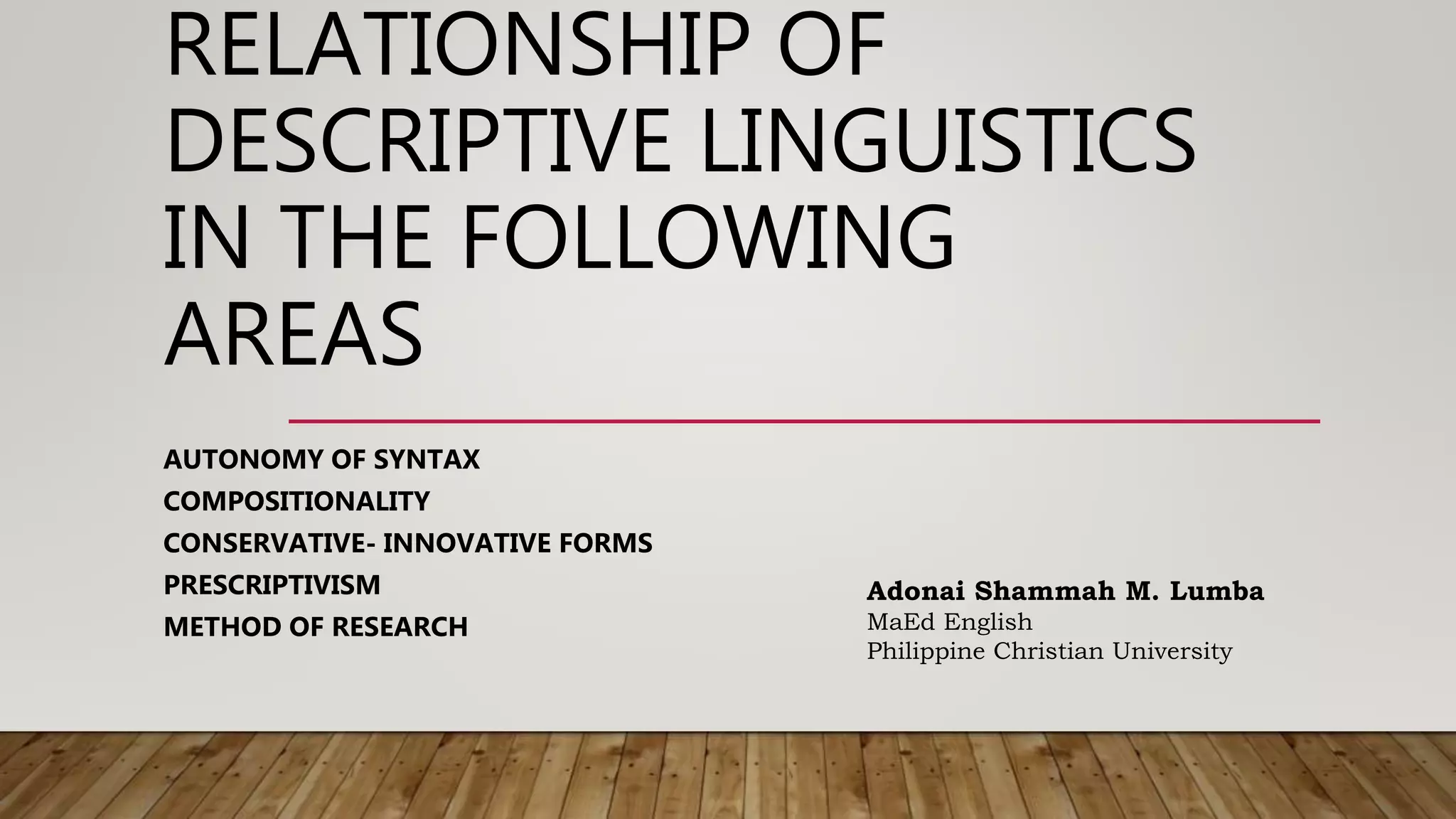
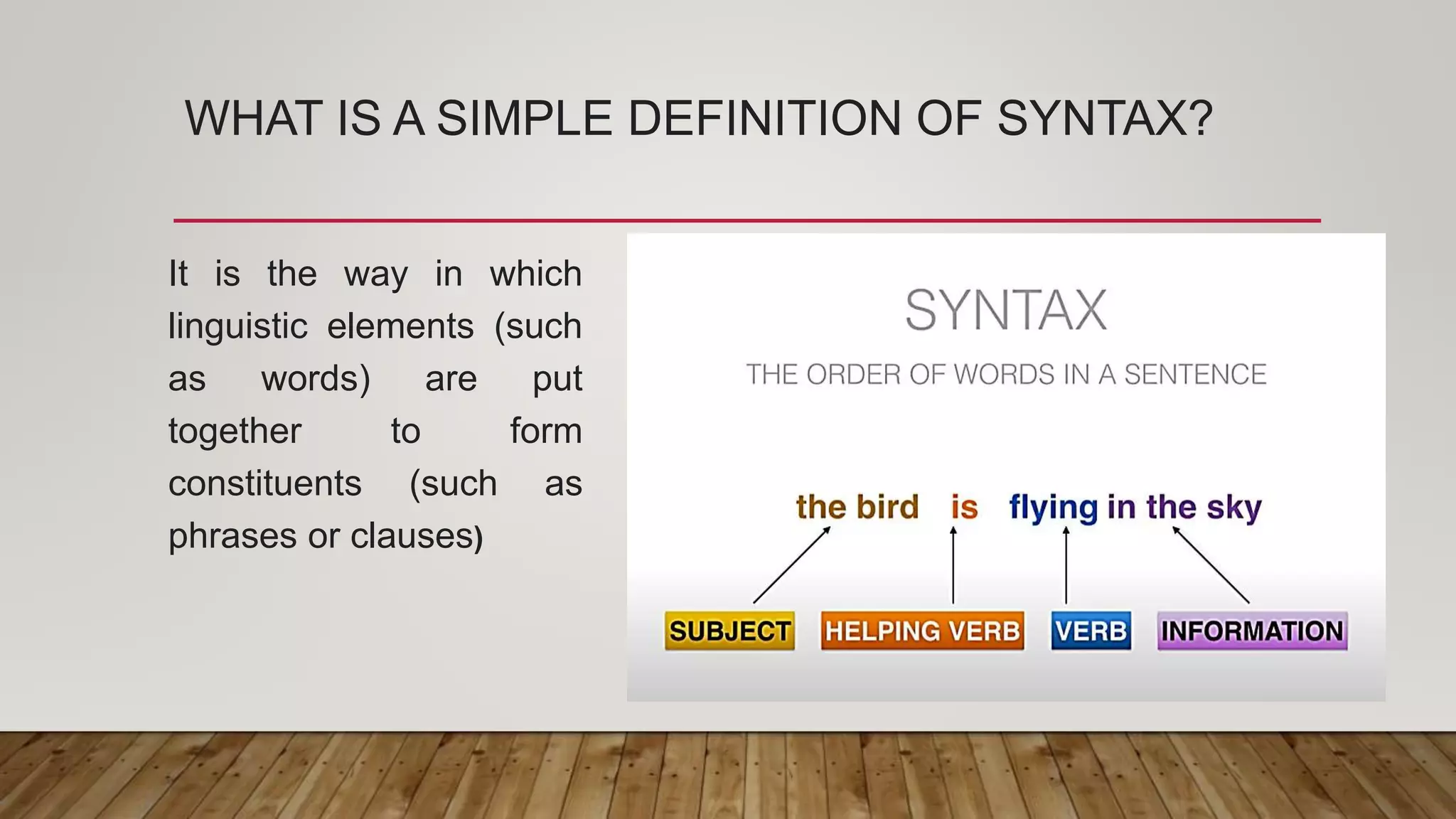
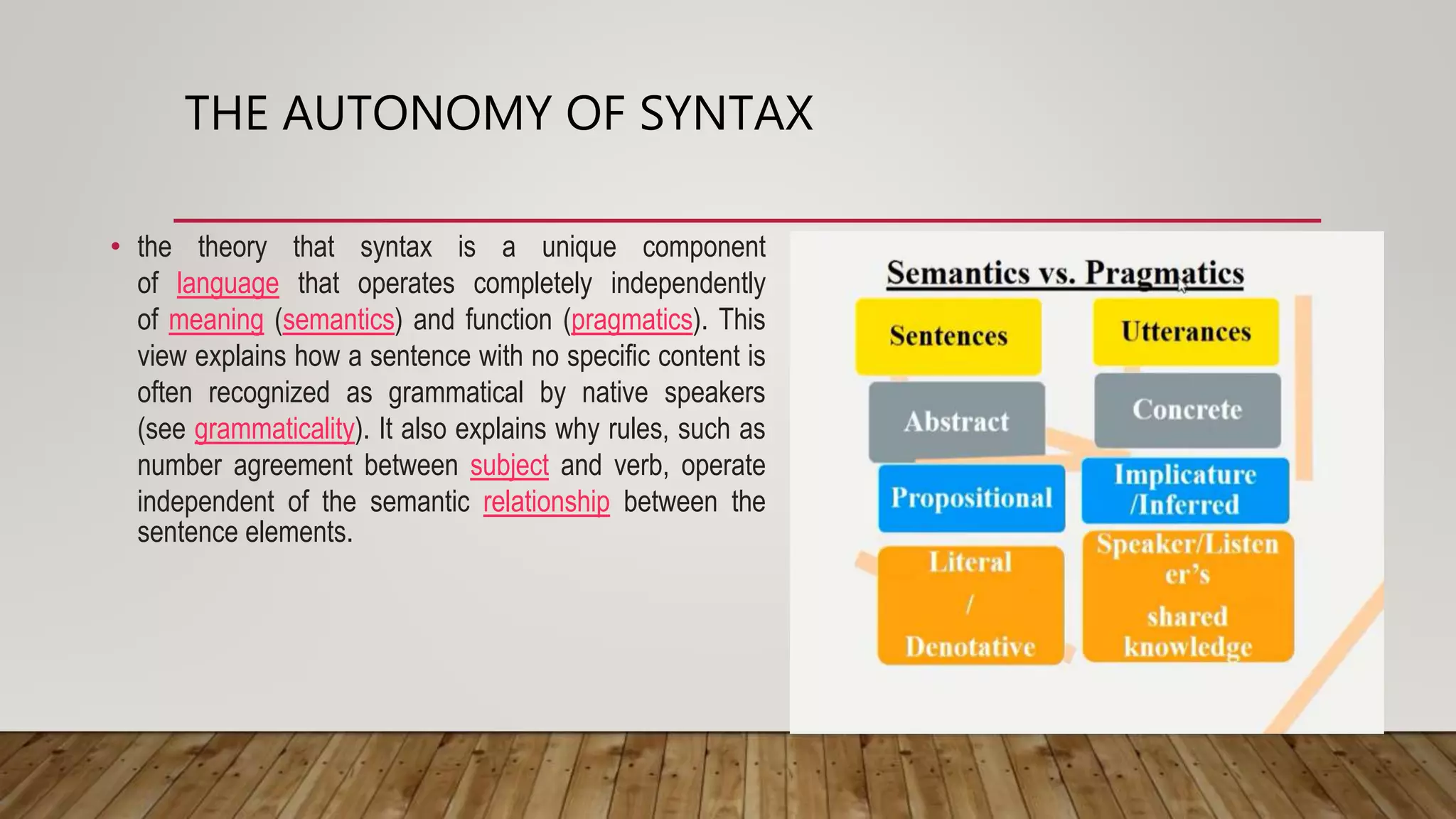
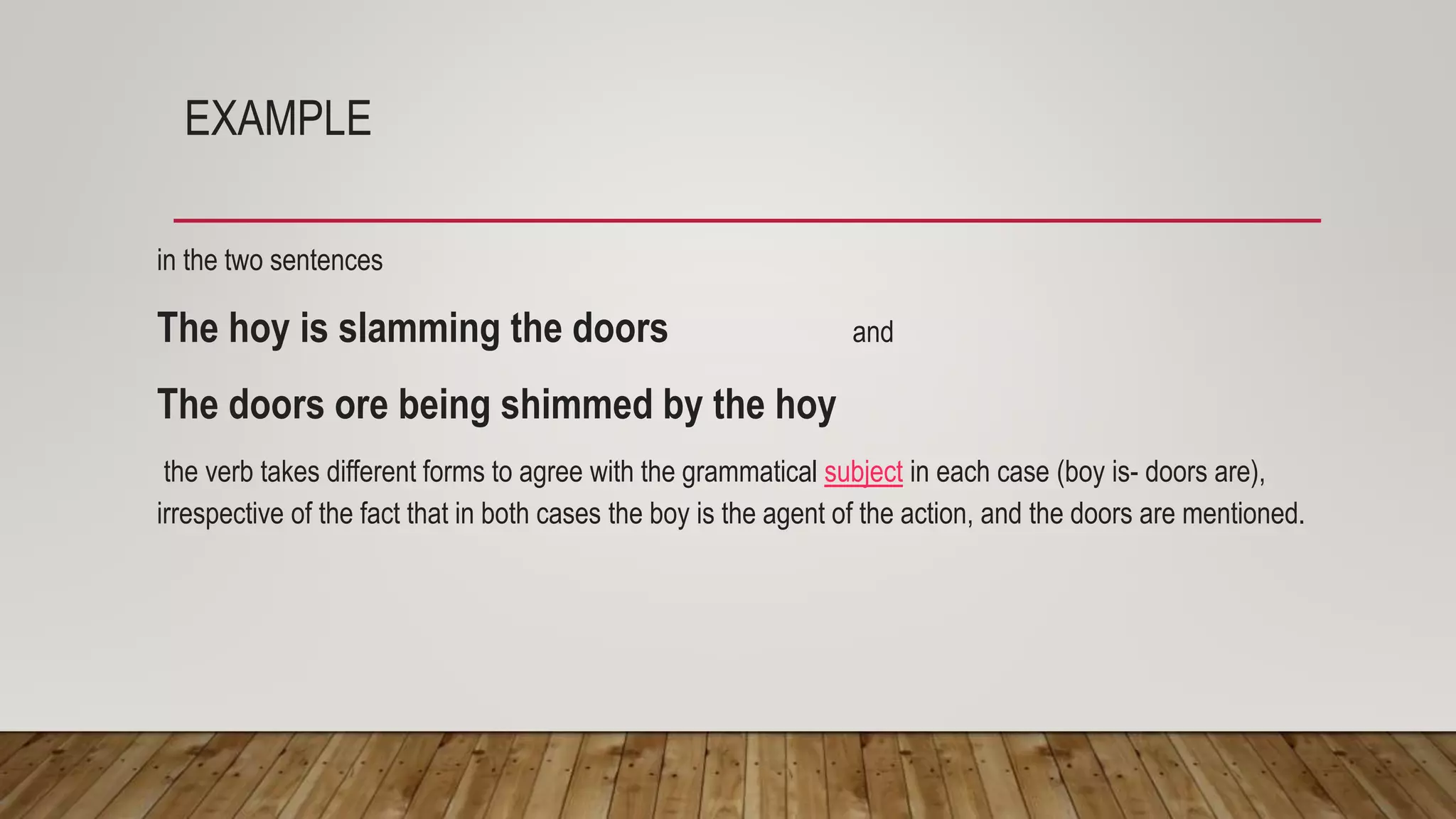
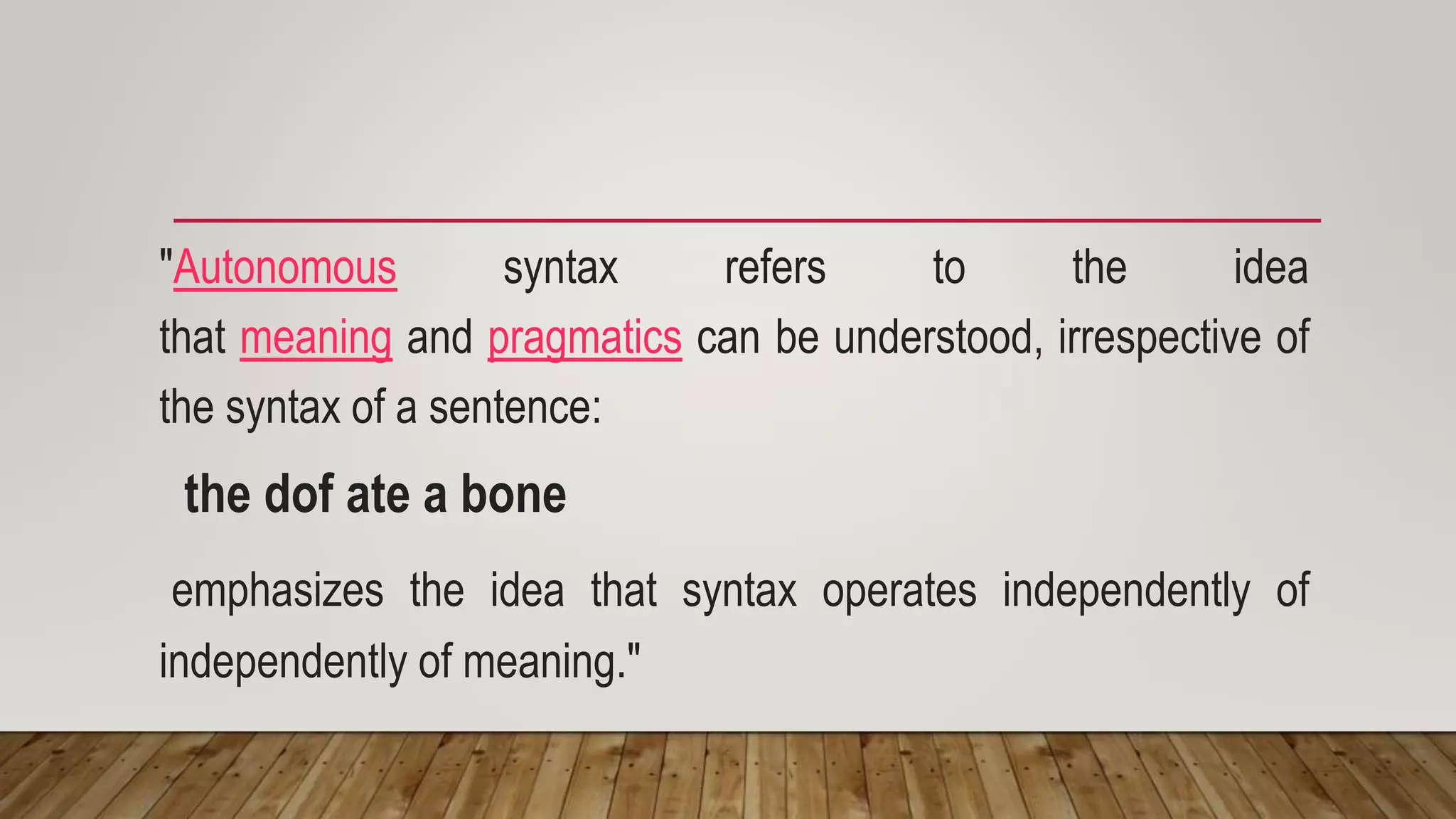

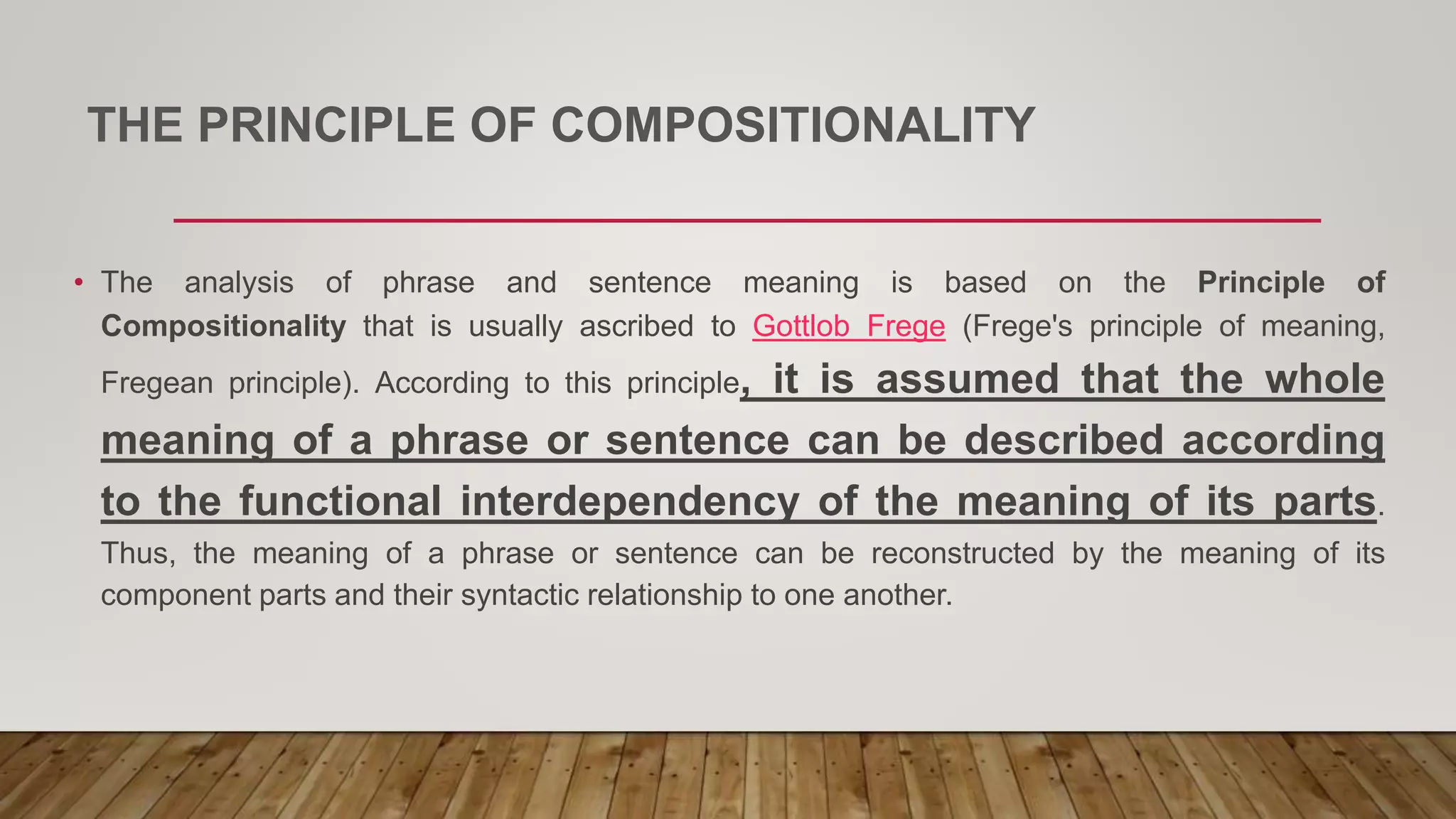
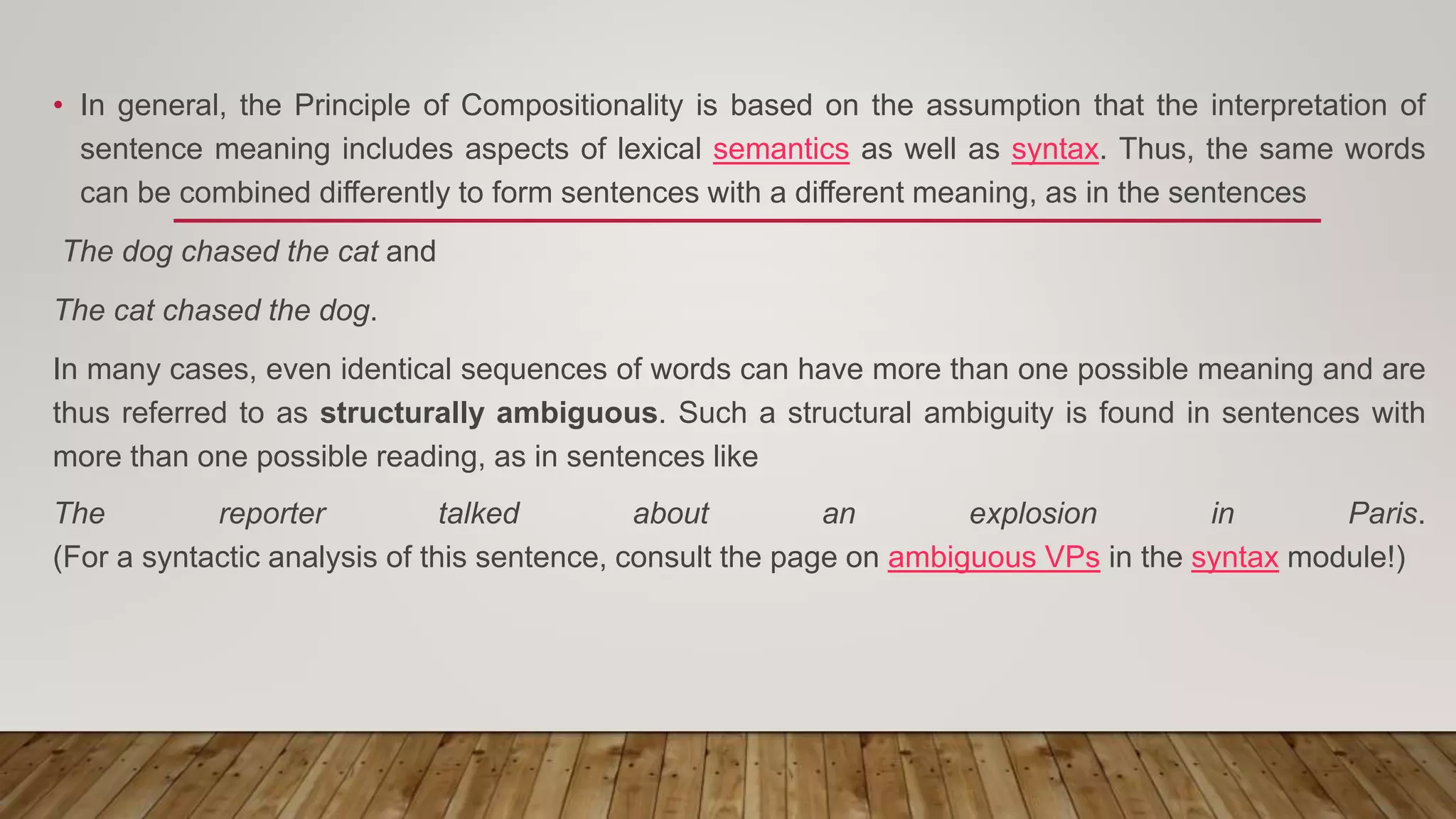



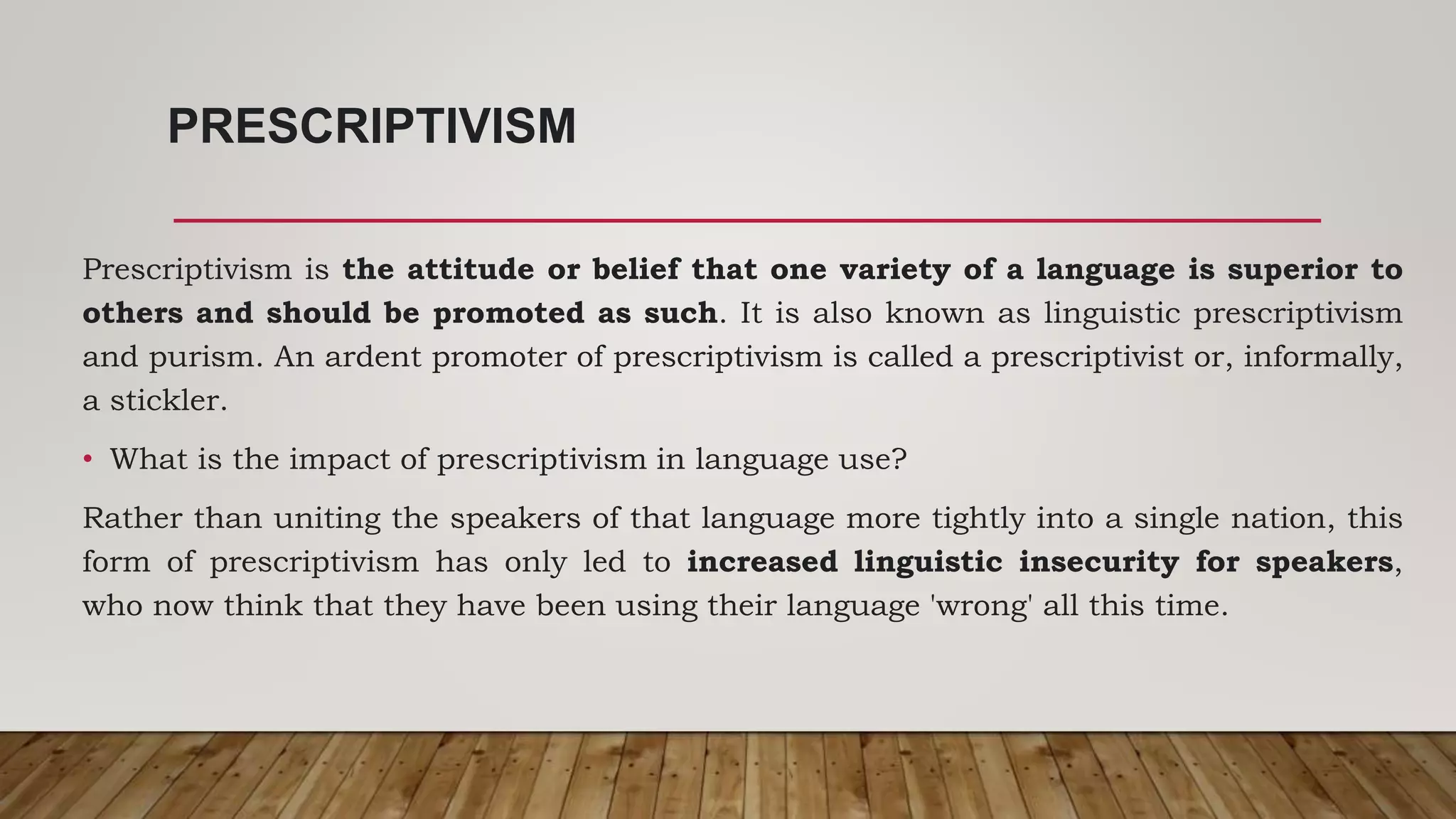
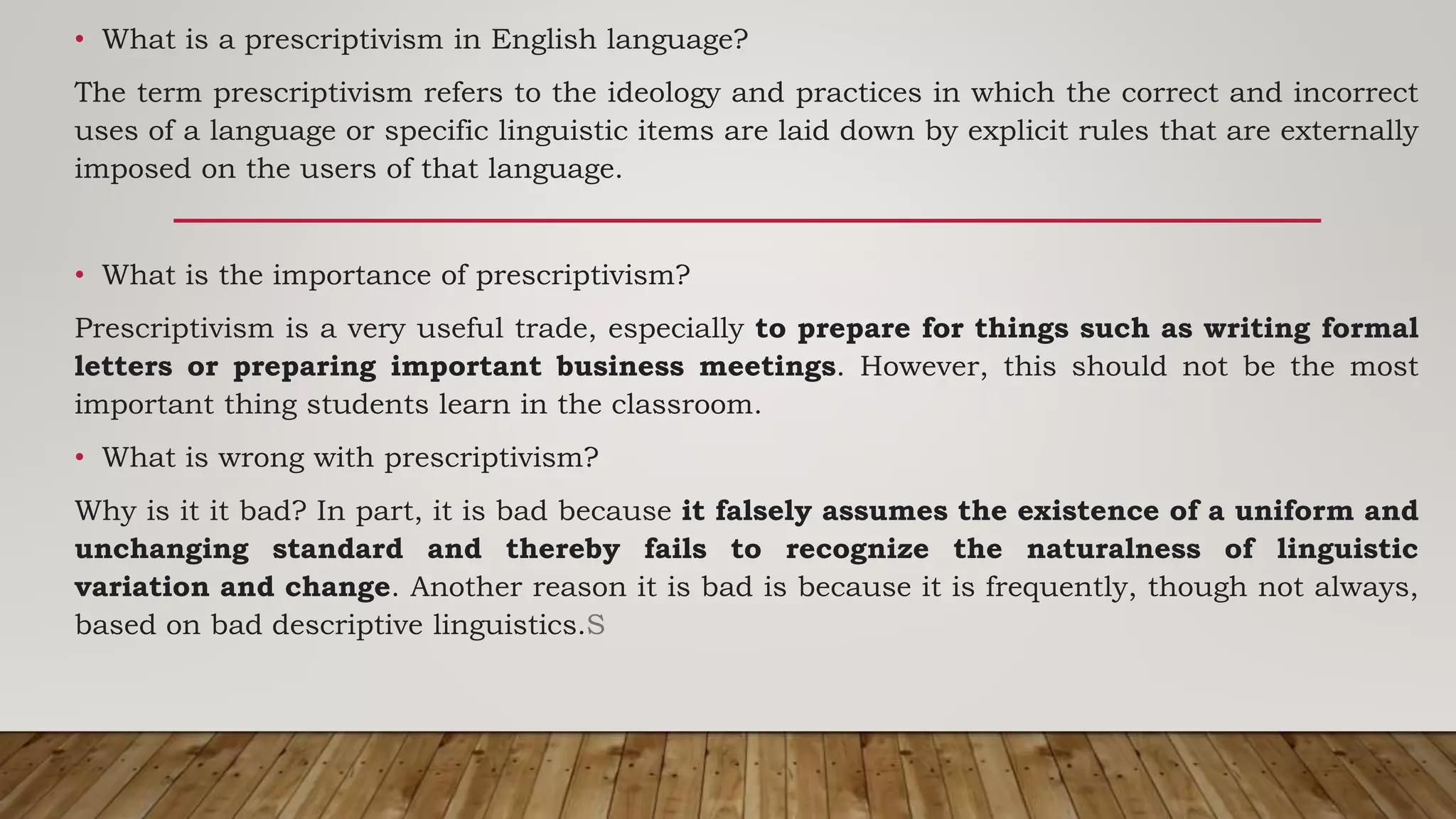
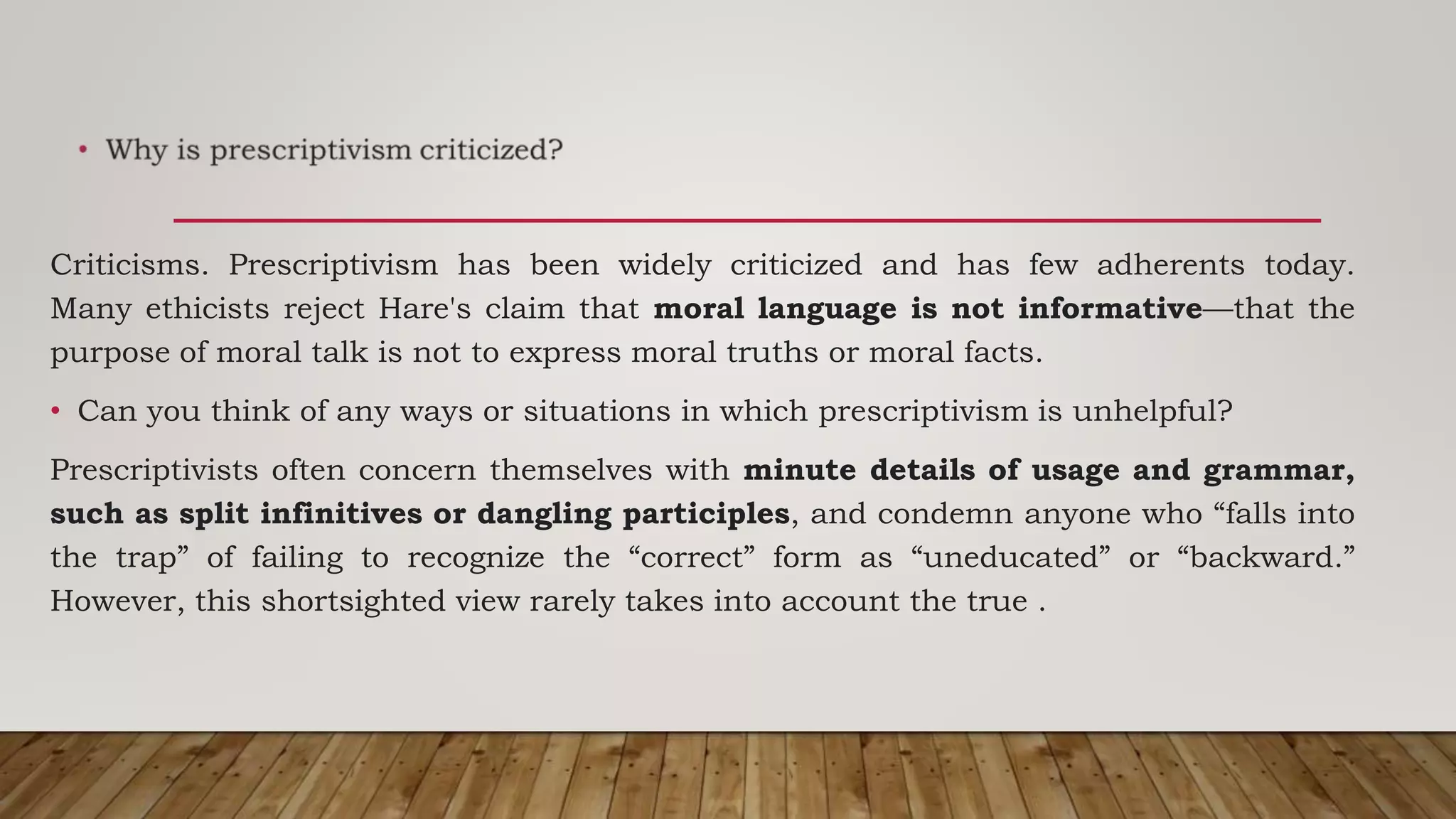
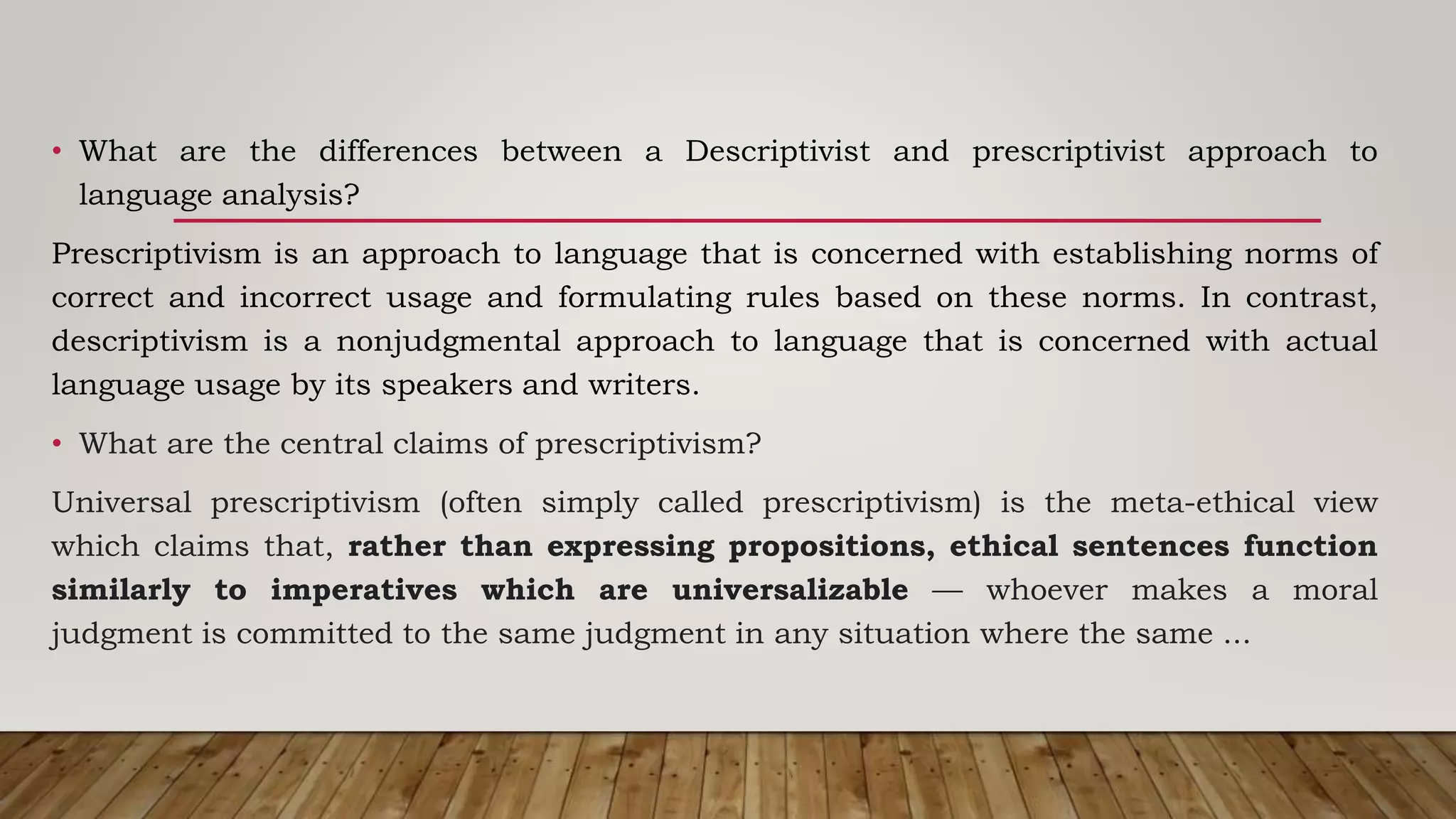

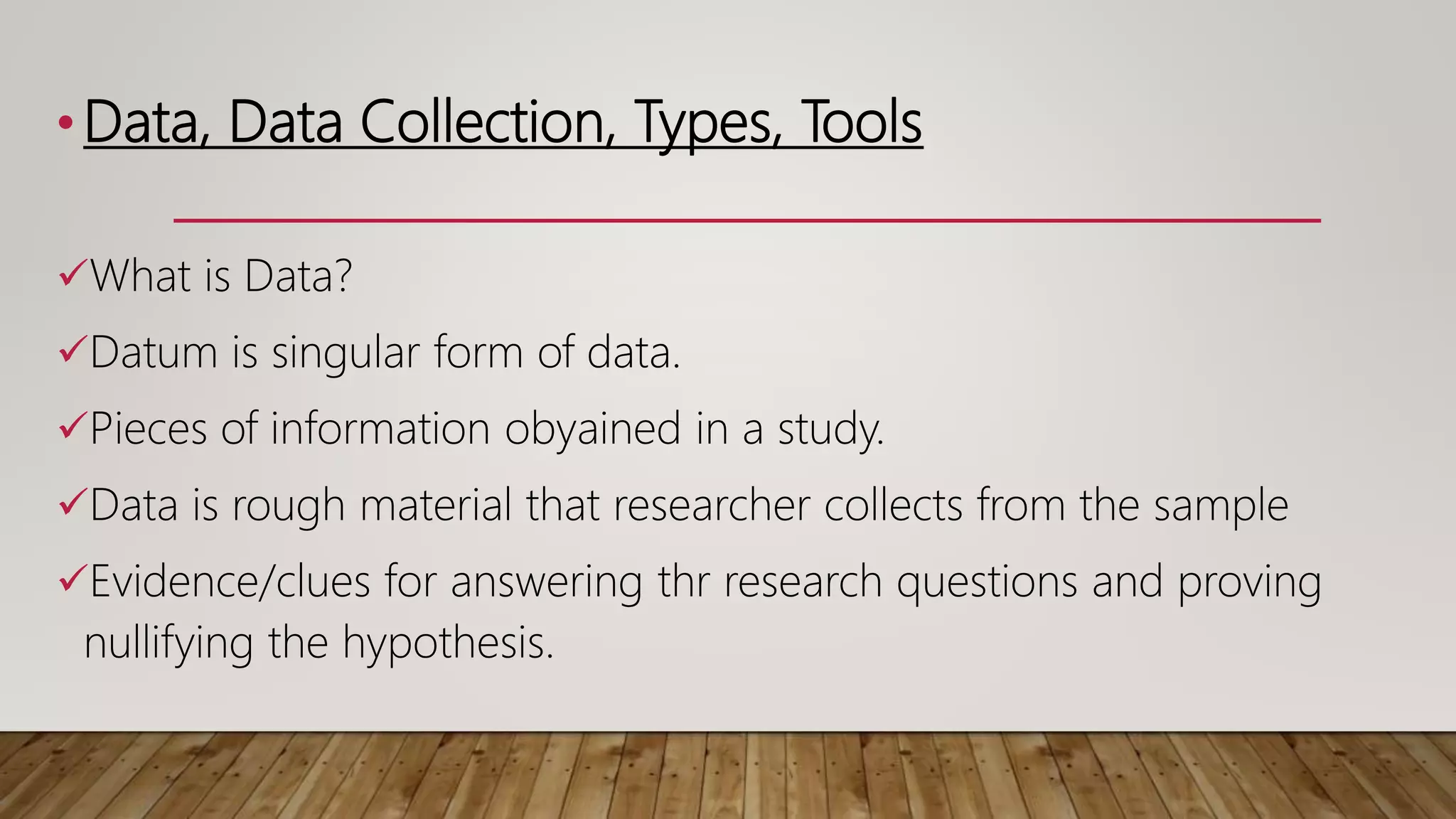
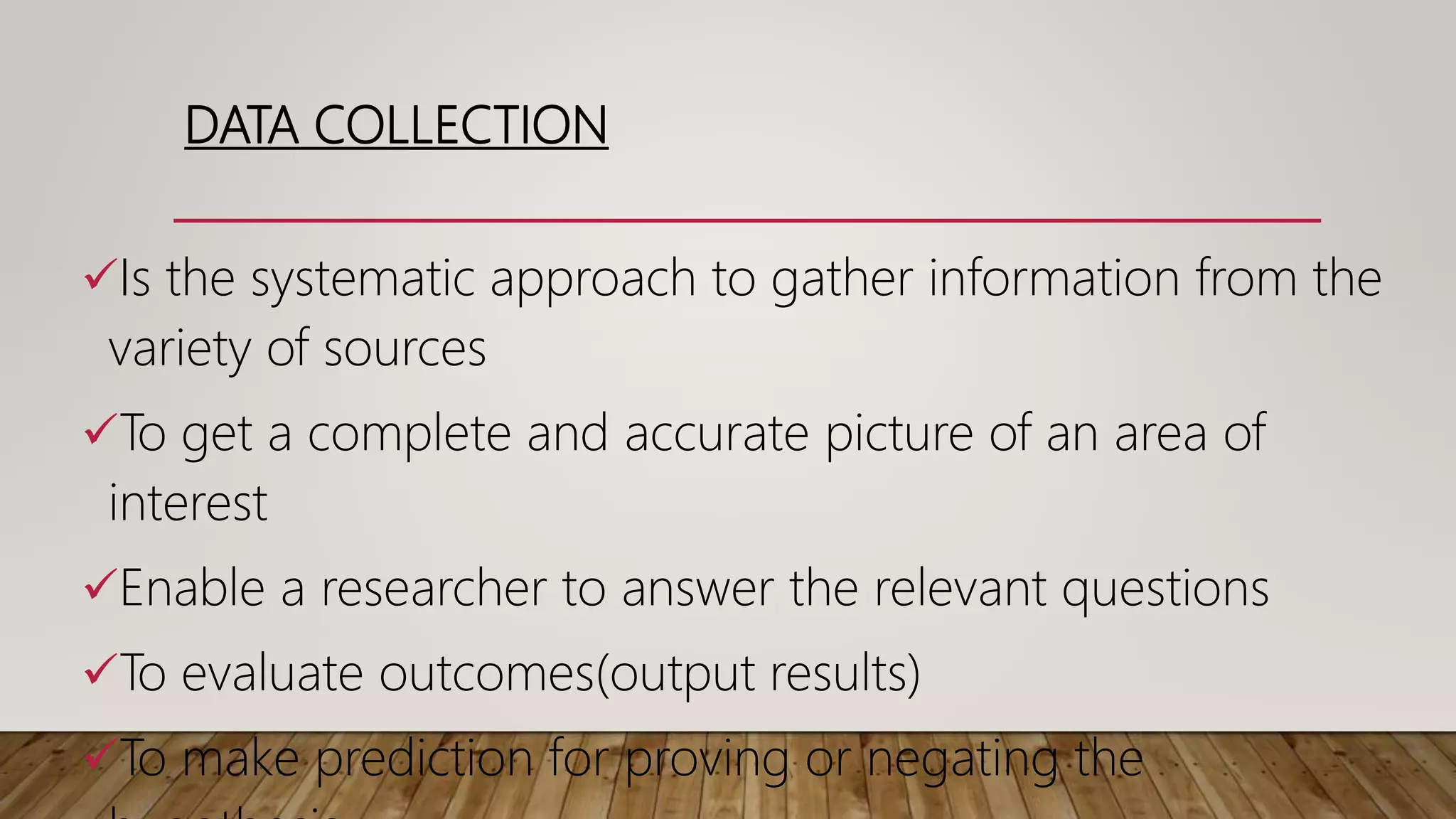
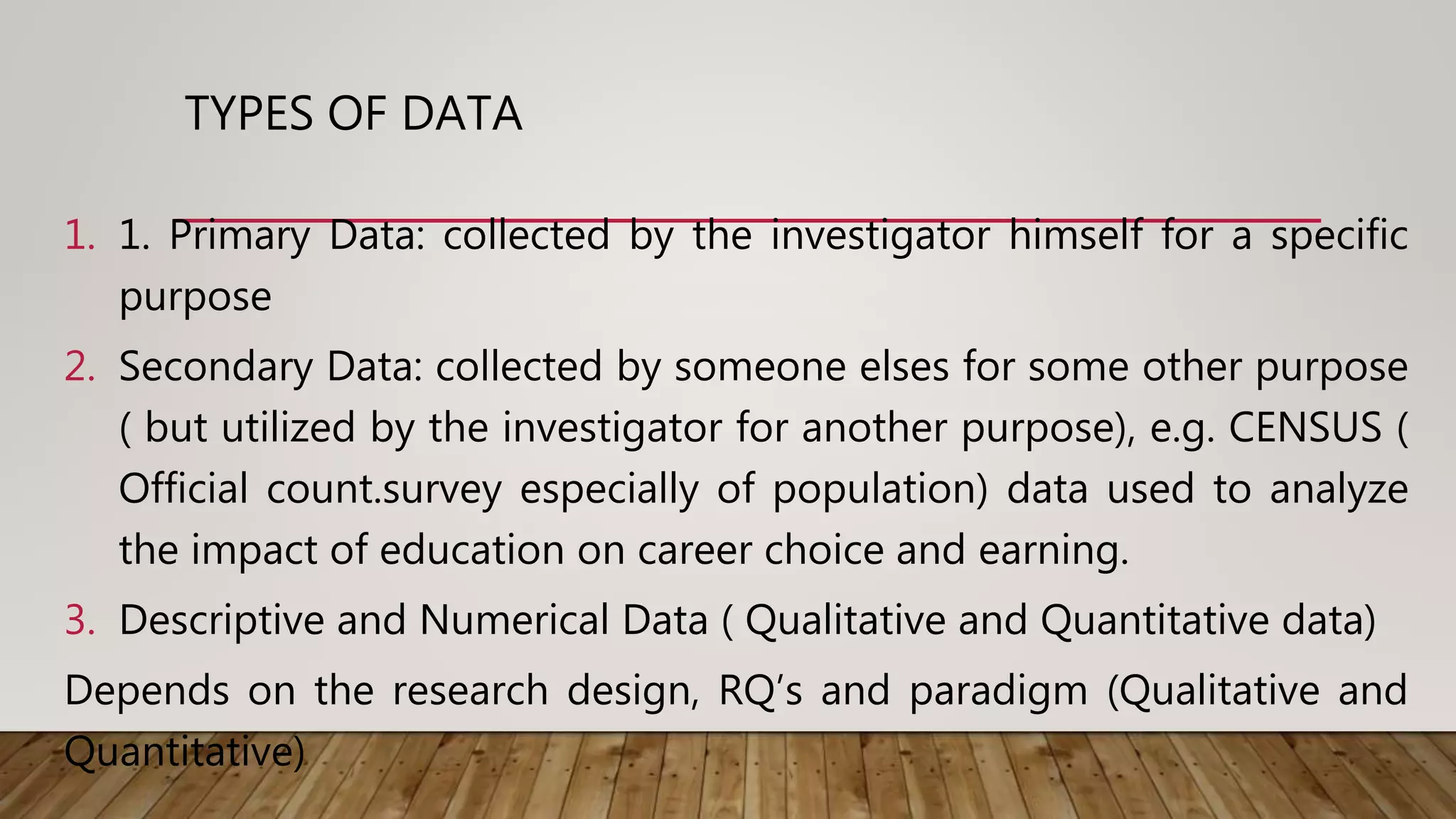

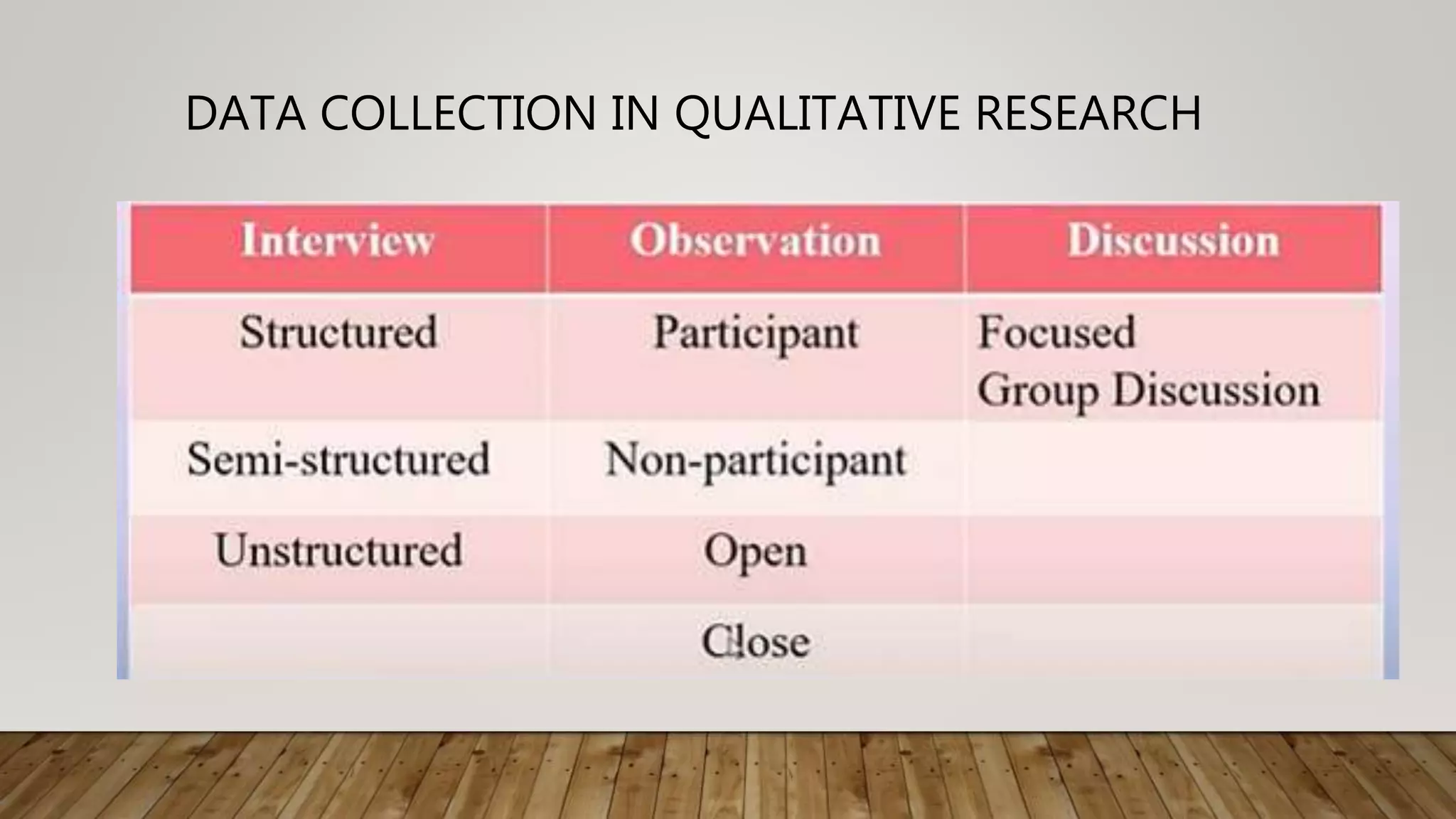

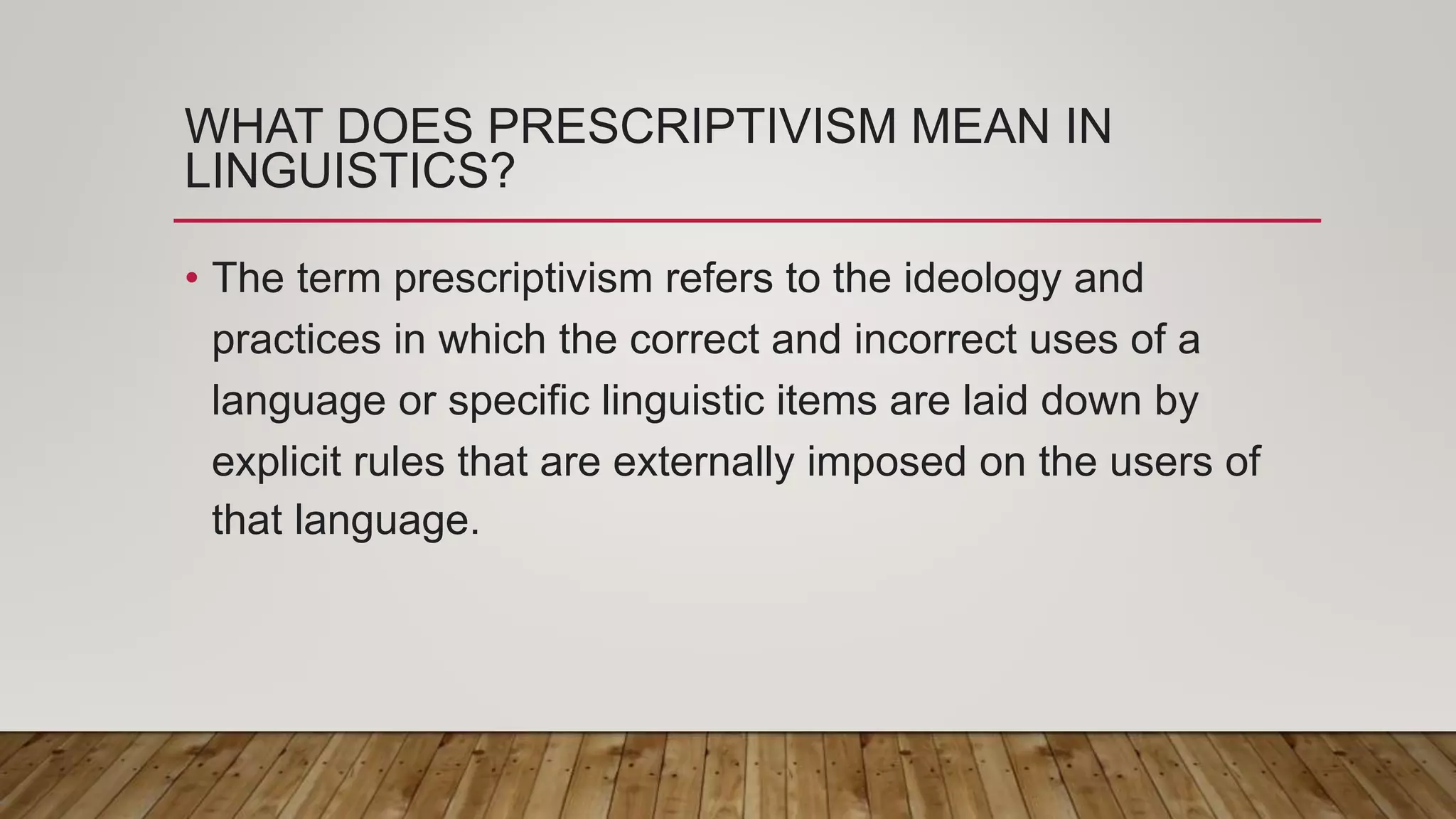
![WHAT IS AN EXAMPLE OF PRESCRIPTIVISM?
• "[Prescriptivism is the] policy of describing languages as
we would like them to be, rather than as we find them.
Typical examples of prescriptivist attitudes are
the condemnation of preposition stranding and of the
split infinitive and a demand for It's I in place of the
normal It's me."](https://image.slidesharecdn.com/relationshipofdescriptivelinguisticsinthefollowingareasautosaved-220824204325-f67df3cb/75/Relationship-of-Descriptive-Linguistics-in-the-following-areas-Autosaved-pptx-24-2048.jpg)

